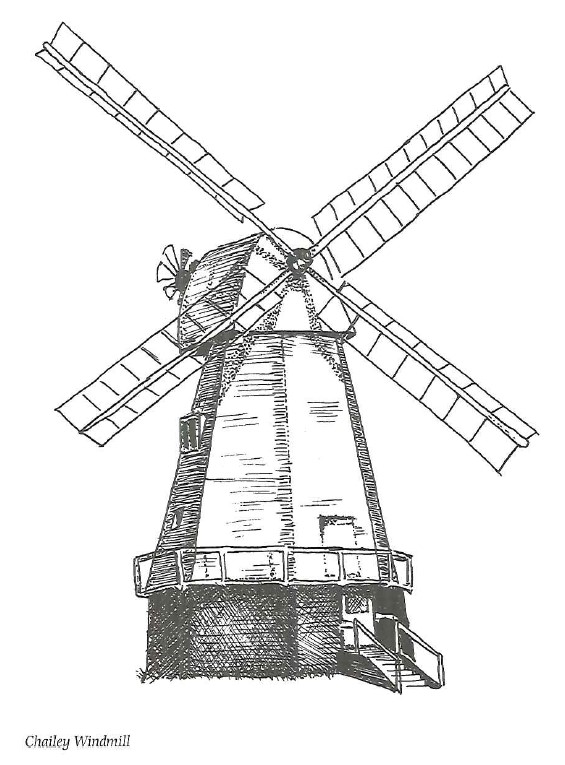Legend said that a great bell lay at the bottom of the moat surrounding the village church, and that it would never be seen until six yoke of white oxen were brought to drag it up. But the passage of time has punctured this romantic tale like so many others. The moat has gone and no bell has ever surfaced.
The church is an arresting sight in itself with its massive central tower and is generally held to be the finest example of Decorated work in the county. It has other claims to fame: the oldest dated brass in Sussex depicting its builder in 1366, William de Echyngham; the oldest weathervane in the country; and the largest series of misericords in Sussex apart from those at Chichester Cathedral. Misericords were ledges under tip-up stalls designed to offer a little comfort to those who could not stand throughout the long medieval services. Etchingham has an unusually carved one which shows a fox preaching to geese. The church also has a monument to Henry Corbould, the designer of the ‘Penny Black’, the world’s first postage stamp, introduced in 1840.
The de Echynghams dominated the area for many years, a family loyal always to the King and usually held in high esteem by him. Our present Queen is descended (through the BowesLyon branch of her family) from Anne de Echyngham.
The family’s great manor house has disappeared without trace, but there are numerous other interesting houses in the village, particularly King’s Lodge where the unfortunate King John of France lived in exile after his capture at the Battle of Poitiers in 1356. Another is Court Lodge with its priest hole and exposed beams which are said to come from ships of the Spanish Armada sunk in Rye Harbour in 1588.
King John’s Lodge, in Sheepstreet Lane, has a ghost – but not of the French monarch. He appears to be a late Victorian country gentleman who enters the corridor of hedges on the east side of the grounds, but fails to emerge at the end near the house.
Nature can still be hard on the people who live at the point where the rivers Dudwell and Rother unite, the low-lying nature of the parish making it a frequent victim of winter flooding. But their feet have not become webbed to make getting around easier, despite what some might tell you.
